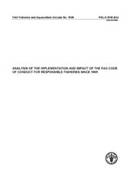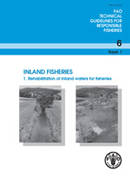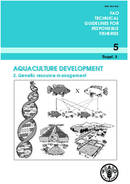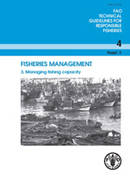出版物
This circular analyses the implementation and the impact of the FAO Code of Conduct for Responsible Fisheries since 1995. In doing so, it first establishes a picture of fisheries and aquaculture sectors before the publication of the Code and 13 years after, in order to detect major changes in both sectors. While fundamental changes in the fisheries sector remained few, the aquaculture sector displays a rather important degree of change, where practices in farm management...
Awareness of the limitations of a single-species approach to fisheries management has led to global acceptance of the need to adopt a wider ecosystem approach to fisheries (EAF) assessment and management. Applying EAF in management requires the application of scientific methods and tools that also go beyond the single-species approaches which used to be, to a large extent, the exclusive sources of scientific advice. Managers and decision-makers must now find management solutions that take into...
Many rivers, lakes and other inland waters have been modified and degraded by human activities. Rehabilitation of degraded systems and mitigation of impacts of ongoing stresses are needed to preserve ecosystem services and fisheries, and are of a high priority if the aquatic biodiversity of inland waters is to be conserved. A number of technical solutions for rehabilitation and mitigation are available to restore habitat diversity, provide for environmental flows and ensure longitudinal and lateral...
These technical guidelines have been developed to support sections of FAO’s Code of Conduct for Responsible Fisheries on aspects of genetic resource management in aquaculture. Guidance is provided on broodstock management and domestication, genetic improvement programmes, dissemination programmes for genetically improved fish, economic considerations in genetic improvement programmes, risk assessment and monitoring, culture-based fisheries, conservation of fish genetic resources, gene banks, a precautionary approach and public relations. The effective management of genetic resources, risk assessment...
Overcapacity is a key factor contributing to the decline in many of the world’s fisheries. The FAO International Plan of Action for the Management of Fishing Capacity (IPOA-Capacity) encourages States to address this problem through capacity management in order to align fishing capacity with the sustainable use of their fish stocks.The purpose of these Guidelines is to aid stakeholders and fisheries managers in the development of National and Regional Plans of Action for the Management...






